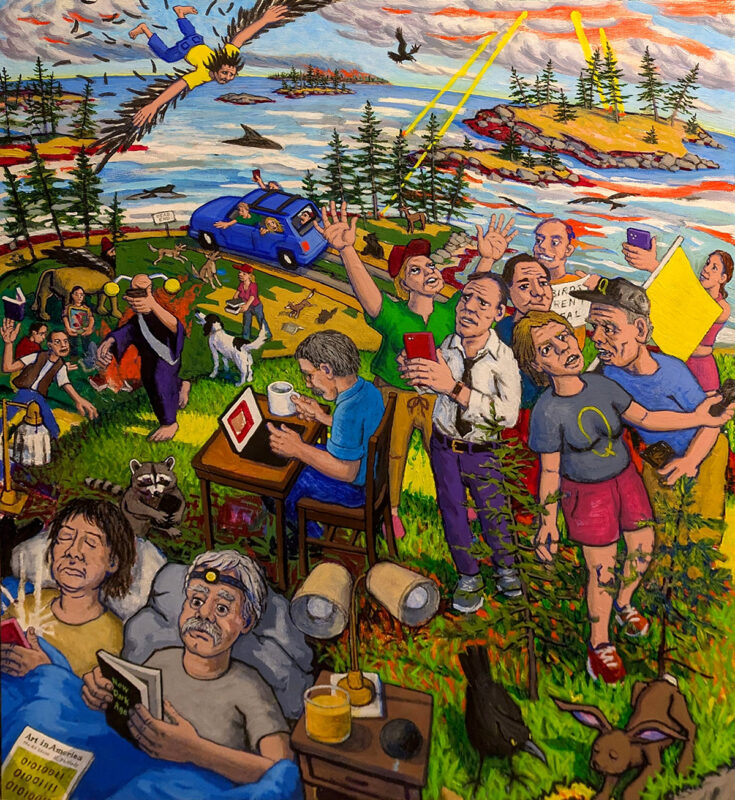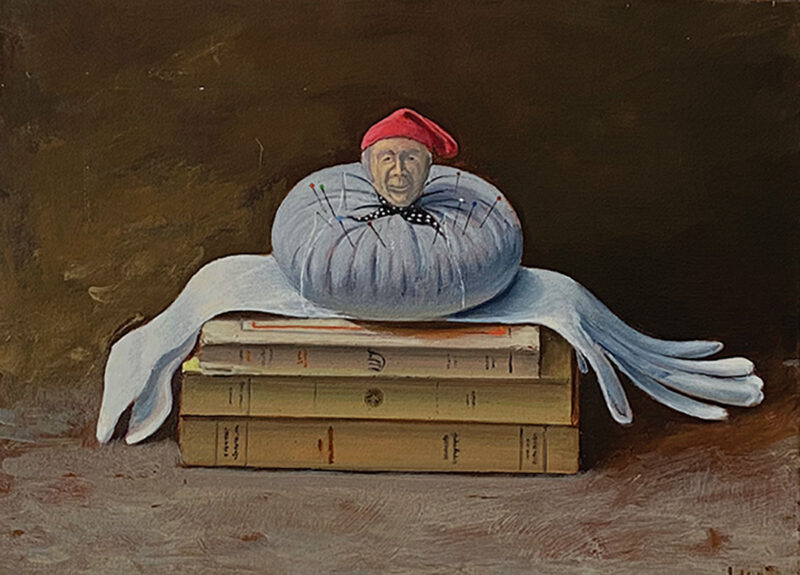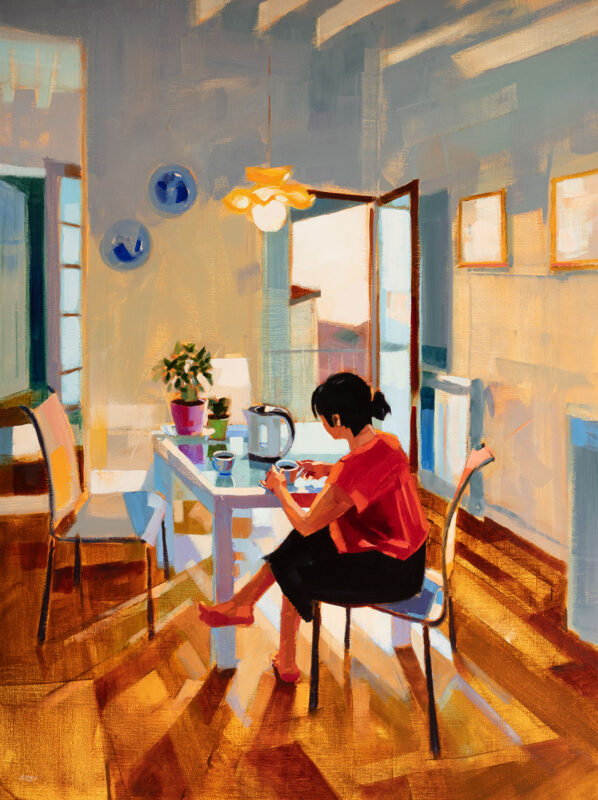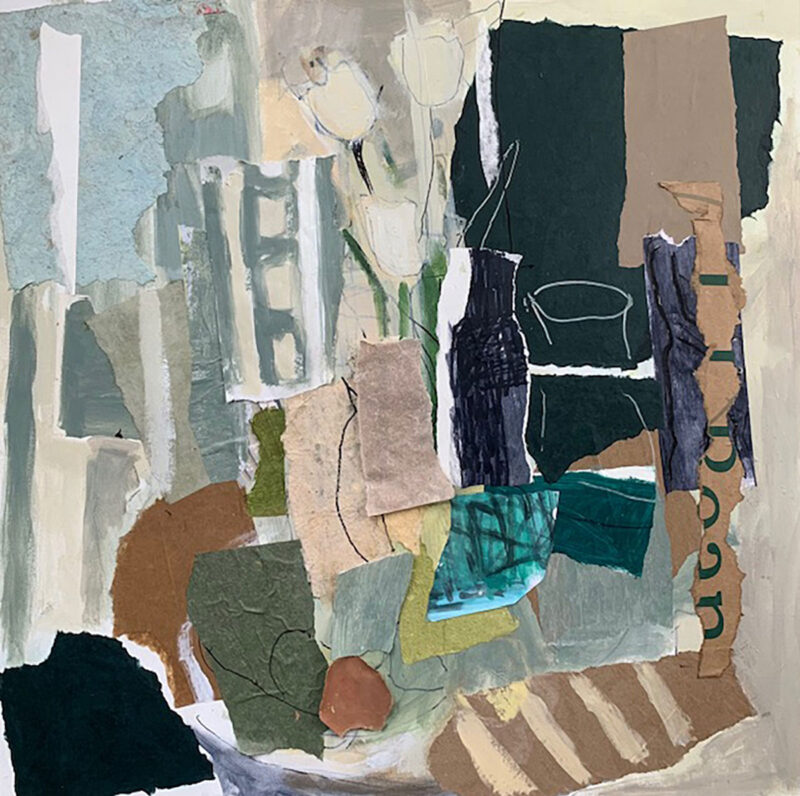
Ellsworth Courthouse Gallery Fine Art is pleased to present “The Mind’s Eye: Turning Inward,” a group show exploring the transition from summer to fall and winter that runs Dec. 6 to Jan. 18 online and at the gallery.
As the hustle and bustle of summer subsides, the sunlight begins to wane, and the days get shorter and colder, people naturally retreat indoors both physically and mentally. “The Mind’s Eye” invites Courthouse Gallery artists and guest artists, to reflect on this seasonal change, to push boundaries and to create from within.
Participating artists include Jeffery Becton, Lise Bécu, Judy Belasco, Ard Berge, Ragna Bruno, Tom Curry, Heidi Daub, Kate Emlen, Elaine Eskesen, Rick Fox, Philip Frey, June Grey, William Irvine, Joseph Keiffer, Philip Koch, Sarah LaFontaine, Rosie Moore, Emily Muir (1904–2003), John Neville, Linda Packard, Stephen Porter, Alison Rector, Robert Shillady and Lilian Day Thorpe.
Comments about the artworks in the show:
“Saturday,” by plein-air landscape painter Rick Fox, comes from his recent studio practice of head paintings that respond directly to his reflection. The paintings are made spontaneously, without conscious ideas about color or backstories. For Fox, “The results are amusing to me and feel like a record of, and an introduction to unexpected aspects of myself.” Fox lives in Kittery, Maine.

The objects in “The French Pin Cushion,” by Joseph Keiffer, were harvested from a flea market in France. The figure on top of the pin cushion is a reference to the French Revolution when the red cap was worn by the hard-liners, such as Mme. LaFarge in Dickens’ Tale of Two Cities. The cap was also called the Liberty Cap or the Phrygian Cap and it is believed the hat was worn by freed slaves in Turkey during ancient times. The white gloves were worn by a bride or one of her brides’ maids, and the books are the kind that were the standard format for all paperback books in France during most of the twentieth century. “These random French lives have more in common now than they ever could have imagined while living. I have given them a second life,” says Keiffer, who lives in New York City, and has been painting the Maine landscape for over 25 years.
Realist landscape painter Judy Belasco remembered creating an abstract painting as a teenager while living in an artist colony in Provincetown with her family in the late 1950s. Abstraction was the genre of the era, and Belasco found the process interesting, but only to a point. After decades of painting representational ethereal landscapes, Belasco wondered how working in abstraction would feel now. While working on Interior Energy, Belasco realized she was painting dots for the first time. It occurred to Belasco that these dots emerged from being steeped in Aboriginal art over many years of visiting the Australian Outback. “My life experience was unconsciously popping up in the painting. I was aware of the energy and space, and it was fascinating to watch the painting unfold. Every time I sat down at the easel there were major changes. I had control, but it was different from landscape painting. Enjoyable.” Although not sure where this recent venture into abstraction will lead, Belasco is curious for a more open-ended process. Belasco splits her time between Philadelphia and Stockton Springs, Maine.
This past summer realist landscape painter Judy Belasco vividly remembered creating an abstract painting as a teenager while living in an artist colony in Provincetown with her family in the late 1950s. Abstraction was the genre of that era, and Belasco found the process interesting, but only to a point. After decades of painting representational landscapes, Belasco wondered how she would feel working in abstraction now. “When working on Interior Energy, I was drawn to the color red as the base from the beginning. Aside from that, everything I knew went out the window. Each day in the studio was a new adventure with lines, form, space, color, and movement. I had control, but it was different from landscape painting. It was definitely not boring!” Belasco realized she was painting dots for the first time, and it occurred to her that these dots emerged from being steeped in Aboriginal art from many years of visiting Australia, as well as four adventure trips deep into the Australian Outback. “One never knows, but it all threads together in its own fashion.” Belasco splits her time between Philadelphia and Stockton Springs.

Philip Frey and his partner, Isabella, find peace and clarity through their own meditation and contemplation practices, as well as their morning rituals such as making coffee or tea. “Morning Reflections in Florence” was inspired by a recent trip the couple took this past fall to Rome and Florence, Italy. Frey’s experience on this trip brought new opportunities for him to explore the Italian light in an urban interior setting allowing him to explore the importance of the morning ritual.
When Lise Bécu received the invitation to participate in The Mind’s Eye, she had just made a sculpture titled “EYE.” “When looking at that piece of stone, I saw an eye and this is the sculpture that came out. The sculpture reminded me of a friend who had recently passed away. This verse from the poem Daffodils by William Wordsworth summed up my feelings about my friend and this piece.”
For oft, when on my couch I lie
In vacant or in pensive mood,
They flash upon that inward eye
Which is the bliss of solitude
And them my heart with pleasure fills,
And dances with the daffodils.
Although artist Emily Muir (1904 to 2003) was best known for her paintings of Maine, there are a number of artworks in the Muir estate where she explored more soul-searching subjects. “Eyes Watching” depicts a young man teetering on the threshold of a doorway depicted by a simple white line. He is shirtless and barefoot, wearing just blue jeans, his torso arched and his arms pushing against an invisible barrier. A room full of red-rimmed, blue eyes watch him. Is this a crossing from one dimension to another? Could this be Muir’s way of processing the premature death of her beloved husband William Muir, a noted sculptor, who died a full 39 years before his wife? We will never know, but as with all art, only the viewer’s interpretation matters.
Sculptor Stephen Porter has worked with cubes, curves and circles for a long time primarily in stainless steel, but also in wood and granite. Recently, Porter has wanted to do something different. “I switched to bronze because I wanted to move away from stainless steel. I like the quality of the material and the color of the patina. I also like the ribbons, partly because they are also different. With Double Bronze Ribbon, the shapes are now different, as well as the color of the patina. In a way, I have found bronze is more difficult to work with than stainless. The welding is different and although the need for the patina is difficult to achieve, I like the result and find they look handsome in my home.”

Rosies Moore enjoys the intimate nature of an interior space, especially when she spends more time indoors during the winter. Known for her loosely painted seascapes and interiors, Moore began experimenting in recent years with mixed media and collage on canvas for her interiors. “I am trying to keep my work as fluid as possible and to find a balance between ambiguous space and familiar images. I am also continuing to experiment with the challenge of mixed media.” Moore met that challenge with her painting “Still Life with Wallpaper,” by organizing a multitude of colors, textures, materials, shapes, layers, and marks into an intriguing spacial interior composition.
For landscape painter Kate Emlen, the invitation to participate in “The Mind’s Eye” caused her to look inward to try something completely new. Emlen was inspired paint in abstraction. She created six small 10×10 abstract paintings representing moments from her summer memories with titles like “The Water Sustains Me” and “Each Night Brings Stars.” “I found tubes of paint I hadn’t touched in years. I turned up the music to fill the studio. I was thoroughly absorbed in the work and enjoyed myself.”
“SOS” by Robert Shillady is a direct response to the deluge from social media, the Internet, and AI, all of which have fostered misinformation and conspiracy theories that in his opinion are tearing this country and the world apart. Known for the many historical and art references embedded in his work, Shillady has a modern-day Icarus in “SOS” about to crash into the techno chaos below—perhaps from multiple warnings about spending too much time on Facebook, Instagram, and TikTok. Center stage is a self portrait of Shillday sitting at his desk quietly surfing the Internet that belies his angst. However, his comment in response to “SOS” sums it up: “Starting in January of 2021, I was able to sleep each night for a year and a half. In the last 6 months, I find myself awake in the middle of the night wanting to scream. Again.” Shillday lives in Brooklin, Maine.
Courthouse Gallery is at 6 Court St., Ellsworth. For more information, call 667-6611, or visit www.courthousegallery.com.

